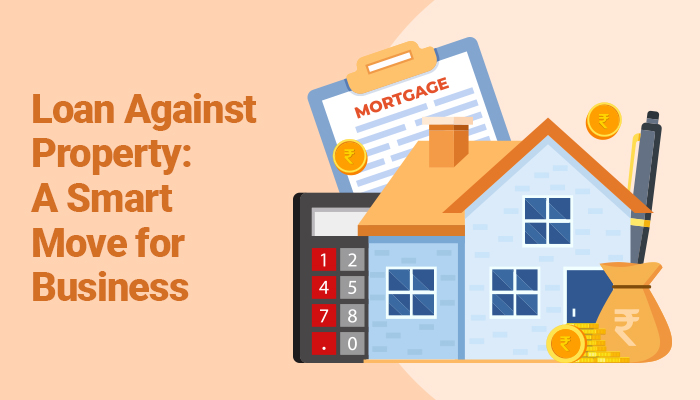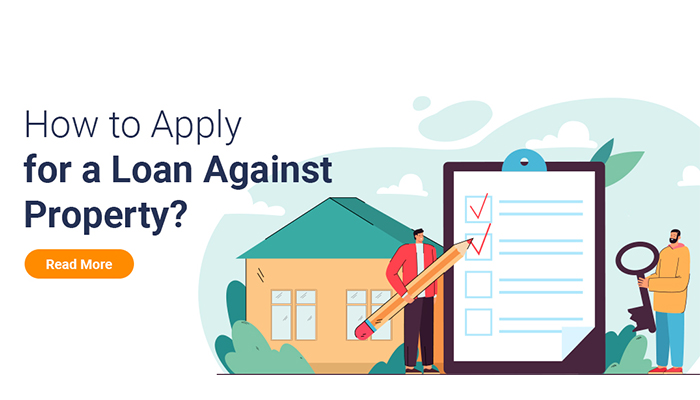What is a Mortgage Loan: Everything About Mortgage Loans

Owning a home is a dream of many individuals. However, the path to homeownership is often paved with financial complexities, such as home loans and mortgage loans. Understanding these complexities is crucial for making informed decisions. This blog provides an understanding of this financial instrument.
What is a Mortgage Loan?
In simple terms, a mortgage loan is a loan against property. This type of loan is commonly used to purchase a home, where the lender provides funds to the borrower, who then repays the loan over an agreed-upon period with interest. The property acts as security for the loan, ensuring the lender's investment is protected.
Understanding a mortgage loan is important for anyone planning to purchase property. Not only do they involve significant financial commitments, but the terms and conditions can greatly affect one’s financial stability and long-term goals. Knowledge of mortgage loan eligibility, various mortgage types, interest rates, repayment schedules, and associated costs can help borrowers make informed decisions and avoid potential pitfalls.
Types of Mortgage Loans
Out of the various types of mortgage loans, there are a few that most banks and non-banking financial institutions (NBFCs) offer. Here are some popular ones:
-
Fixed-Rate Mortgage
A fixed-rate mortgage offers a constant interest rate throughout the loan tenure. This provides predictability in monthly payments, making budgeting easier. Borrowers are protected from market fluctuations that could increase interest rates.Fixed-rate mortgages are ideal for individuals who plan to stay in their homes for a long period and prefer stability in their financial planning. They are particularly suited for borrowers who expect a steady income and want to avoid the risk of rising interest rates.
-
Adjustable-Rate Mortgage (ARM)
Adjustable-rate mortgages have interest rates that change periodically based on an index. Initially, they often have lower rates than fixed-rate loans. However, after a set period, the rates can fluctuate according to market conditions.The main advantage of ARMs is the lower initial mortgage loan interest rate, which makes monthly payments more affordable. However, the unpredictability of future rates can lead to increased payments, making long-term financial planning more challenging.
-
Interest-only Mortgage
Interest-only mortgages allow borrowers to pay only the interest for a specific period, after which they begin paying both principal and interest. This structure can result in lower initial payments. These loans are suitable for borrowers who anticipate higher incomes in the future or those with fluctuating incomes. The risk lies in the potential for higher payments once the interest-only period ends. This can put a strain on finances if there is no expected increase in income. -
Reverse Mortgage
Reverse mortgages are available to homeowners aged 62 or older. They allow homeowners to convert part of the equity in their homes into cash without selling the property. The loan is repaid when the borrower moves out of the home or passes away.The primary advantage is the ability to access home equity without monthly payments. However, reverse mortgages can deplete the equity in the home, leaving less for heirs. Additionally, they come with fees and interest that can accumulate over time.
Key components of a Mortgage Loan
A mortgage loan comprises various key components, out of which some are listed below:
- Principal: It is the amount of money borrowed. It is the loan's base amount on which interest is calculated. The calculation involves the initial loan amount, subtracting any down payments or fees paid upfront.
- Interest Rate: To answer the most important question — what mortgage loan interest rate is — it comprises two kinds: fixed rates and variable rates. Fixed rates remain constant throughout the loan term, while variable rates can change based on market conditions. Understanding the differences is crucial as it impacts monthly payments and total loan costs.
- Loan Term: Typical mortgage loan terms range from 15 to 30 years. Shorter terms usually have higher monthly payments but lower total interest costs, while longer terms spread payments out, reducing monthly payments but increasing total interest.
- Down Payment: It is a percentage of the home’s purchase price paid upfront. It reduces the loan amount and lowers lender risk. Typical down payments range from 10% to 20%, but some loans may require less.
Mortgage Loan Process
Once you decide to get a mortgage loan, the loan application process is fairly simple.
- Pre-Approval: Before you apply for a mortgage loan, you must obtain a pre-approval from the lender. It involves a lender reviewing your financial situation to determine how much you can borrow. It strengthens your position as a buyer and speeds up the final loan approval process.
- Application Submission: Key documents required for a mortgage loan include proof of income, credit history, employment verification, and details about the property. These documents help the lender assess your ability to repay the loan. The process starts with completing a loan application, followed by document submission, lender review, and eventual approval or denial.
- Underwriting: It evaluates your credit score, debt-to-income ratio, and overall financial health to determine your mortgage loan eligibility. An appraisal ensures the property’s value is sufficient to cover the loan amount, protecting the lender’s investment.
- Closing: It involves signing final loan documents and transferring ownership of the property. Additional costs such as loan origination fees, appraisal fees, and title insurance, among others, are also included. It’s essential to understand and budget for these additional costs.
Mortgage loan vs Home loan
While the terms "mortgage loan" and "home loan" are often used interchangeably, they represent distinct financial products.
| Feature | Mortgage Loan | Home Loan |
|---|---|---|
| Definition | A loan secured against a property, providing funds for various purposes. | A loan specifically designed to purchase, construct, or renovate a residential property. |
| Purpose | Flexible, can be used for various needs (business, education, etc.). | Exclusively for residential property-related expenses. |
| Interest rate | Generally higher than home loans. | Typically lower than mortgage loans. |
| Loan tenure | Shorter, usually up to 15 years. | Longer, often up to 30 years. |
| Loan to value (LTV) ratio | Lower, typically around 60-70%. | Higher, often up to 90%. |
| Risk profile | Higher risk due to broader usage. | Lower risk due to specific purpose. |
Tips to choose right Mortgage Loan
It is very important to consider the following aspects before choosing the right mortgage loan.
- Evaluate your income, expenses, and financial goals to determine the mortgage type and amount that aligns with your needs.
- Explore different mortgage options offered by various lenders to find the most competitive rates and terms.
- Thoroughly read the loan agreement to understand all terms, fees, and potential penalties.
- Consulting with a mortgage broker or financial advisor can provide valuable guidance and help you make informed decisions.
Wrapping Up
Navigating the mortgage landscape can be complex, but understanding the basics is essential for making sound financial decisions. By carefully considering your financial situation, exploring different loan options, and seeking professional advice, you can increase your chances of finding the perfect mortgage to support your homeownership dreams. Consider reaching out to IIFL Home Loans for expert guidance and competitive rates.
FAQs
Q1. What is the difference between a fixed-rate and an adjustable-rate mortgage?
A fixed-rate mortgage offers a constant interest rate throughout the loan term, while an adjustable-rate mortgage allows the interest rate to fluctuate based on market conditions.
Q2. How much down payment is typically required for a mortgage?
Down payment requirements vary by lender, but a 20% down payment is often considered ideal to avoid private mortgage insurance (PMI).
Q3. What factors influence mortgage loan interest rates?
Mortgage loan interest rates are influenced by economic strength, inflation, government policy, supply and demand, credit risk, and loan period.
Q4. Can I refinance my mortgage?
Refinancing involves obtaining a new mortgage to replace an existing one, potentially securing a lower interest rate or accessing your home equity.
Q5. What is mortgage insurance?
Mortgage insurance protects the lender in case of default. It's typically required for borrowers with down payments that are below 20%.
Tags
Disclaimer: The information contained in this post is for general information purposes only. IIFL Home Finance Limited (including its associates and affiliates) ("the Company") assumes no liability or responsibility for any errors or omissions in the contents of this post and under no circumstances shall the Company be liable for any damage, loss, injury or disappointment, etc. suffered by any reader. All information in this post is provided "as is", with no guarantee of completeness, accuracy, timeliness, or of the results, etc. obtained from the use of this information, and without warranty of any kind, express or implied, including, but not limited to warranties of performance, merchantability, and fitness for a particular purpose. Given the changing nature of laws, rules, and regulations, there may be delays, omissions, or inaccuracies in the information contained in this post. The information on this post is provided with the understanding that the Company is not herein engaged in rendering legal, accounting, tax, or other professional advice and services. As such, it should not be used as a substitute for consultation with professional accounting, tax, legal or other competent advisers. This post may contain views and opinions which are those of the authors and do not necessarily reflect the official policy or position of any other agency or organization. This post may also contain links to external websites that are not provided or maintained by or in any way affiliated with the Company and the Company does not guarantee the accuracy, relevance, timeliness, or completeness of any information on these external websites. Any/ all (Home/ Loan Against Property/ Secured Business Loan/ Balance Transfer/ Home Improvement Loan/ NRI Home Loan/ Home Loan for Uniformed Services) loan product specifications and information that may be stated in this post are subject to change from time to time, readers are advised to reach out to the Company for current specifications of the said (Home/ Loan Against Property/ Secured Business Loan/ Balance Transfer/ Home Improvement Loan/ NRI Home Loan/ Home Loan for Uniformed Services) loan.
 Login
Login





















